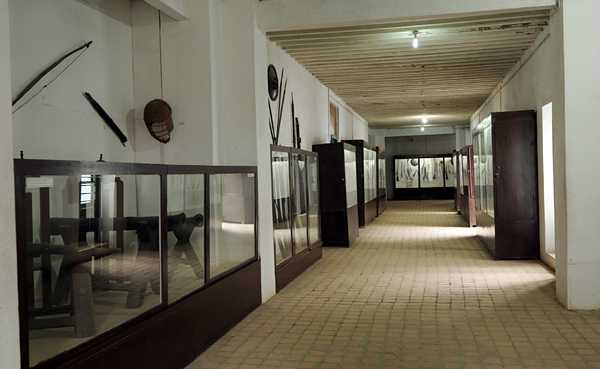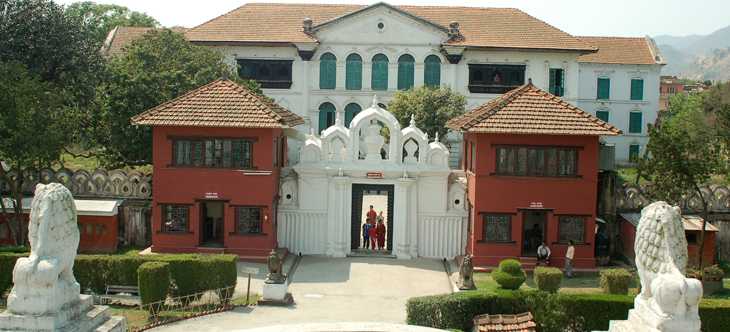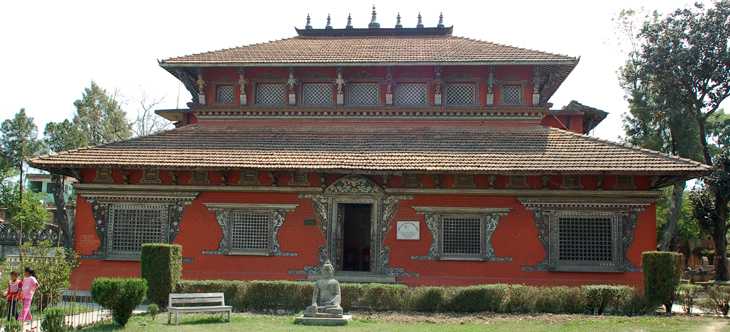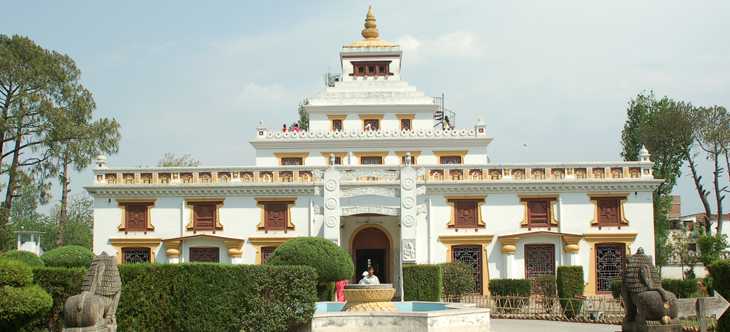National Museum of Nepal
Label : Fun For Kids
Tags : Museum
Timings : February - October:
Wednesday - Sunday: 10:30 AM - 4:30 PM, Monday: 10:30 AM - 2:30 PM
November - January:
Wednesday - Sunday: 10:30 AM - 3:30 PM, Monday: 10:30 AM - 2:00 PM
Entry Fee : Entry for Citizen of SAARC Countries: NPR 50
NPR 75 for Entry with a Still Camera
NPR 150 for Entry With a Video Camera
Entry for citizens of Other Foreign Countries: NPR 150
NPR 100 for Entry With a Still Camera
NPR 200 for Entry With a Video Camera
Chhauni Museum
Ways to Experience this attraction
National Museum of Nepal, Kathmandu Overview
Also known as the Rashtriya Sangrahalaya, the National Museum is a century-old museum that has preserved and revered the exhibits depicting the rich historical significance of Nepal. Home to three buildings - the Historical Museum Building, the Buddhist Art Gallery, and the Juddha Jayatia Kala Shala - this monument houses cultural, historical, and philatelic sections, including weapons, artworks, coins, statues, postage stamps, and several species of plants and animals.
The National Museum came into existence about one hundred years ago and has managed to retain its significant position among the tourist spots in the country ever since. Being the largest museum of Nepal, it stands as a historical symbol for the country and plays a significant role in the development of museums, as well as the archaeological works throughout the country. The National Museum serves as a ground where people relive the long battles that were fought on Nepal's land.
Read More on National Museum of Nepal
History of National Museum of Nepal - From Mansion to Museum

Established in 1928, the National Museum of Nepal was constructed by renovating an ancient building built in the early years of the 19th century. Formerly, it used to be a mansion in which the de facto ruler of Nepal, Bhimsen Thapa, resided. Formerly, the museum served as a place to exhibit solely weapons and firearms which had been used during the war years in Nepal. The monument was called the 'Chhauni Silkhana' back then, which literally translates to 'arsenal museum'.
The prestigious museum was opened to the general public in 1939 after Juddha Shamsher Jung Bahadur Rana, the then Prime Minister of Nepal, permitted the Nepalese to visit the historical monument after paying a meagre admission fee. He raised two other buildings beside the main mansion and named one after himself. The Chhauni Silkhana was renamed as the Rashtriya Sangrahalaya, literally translating to National Museum, in 1967, under the reign of King Mahendra. The museum is under the supervision of the Ministry of Culture, Tourism and Civil Aviation at present.
The Historical Museum Building

The Historical Museum Building is the oldest and the main building in the complex. Formerly, it was the residence of Bhimsen Thapa. At present, the building houses a Philatelic Gallery, a Historical Gallery, a Natural Science Gallery, and a Numismatics Museum. The extraordinary exhibition of armaments includes swords and shields, khukuris, and battle armour, which date back several centuries. It also houses leather canons which were seized during the first war fought between Nepal and Tibet in 1792, cane helmets, Birgun, and Thomson submachine guns.
The sword presented by the ruler of France, Louis-Napoleon Bonaparte remains the most valuable treasure, along with the plethora of relics from 1934, the year in which Kathmandu became a victim of a massive earthquake. Equally enthralling are the displays of the Natural Science section, which houses a variety of species of birds and animals of the wild, including mammals, reptiles, insects, and butterflies. The philatelic section, including an extensive collection of stamps from previous centuries, primarily draws in collectors from afar. On the other hand, the numismatic section houses bronze, copper, silver, and gold coins dating back to the Licchavi era and continuing until recent years. Finally, life-sized paintings of the rulers during the Malla and Shah dynasties along with the Prime Ministers adorn the walls of the building.
The Buddha Art Gallery

A repository of Buddhist sculptures, paintings, and ceremonial objects, the Buddhist Art Gallery provides a rich insight into the Buddhist art in the country of Nepal. This gallery is segregated into three sections, namely the Kathmandu Valley, the Terai, and the northern Himalayan sections.
While the first section comprises of figures of Bodhisattvas and the Buddha and Chaityas cast in bronze, the Terai section is ornate with numerous pictures of Lumbini, the birthplace of the Buddha. On the other hand, the northern Himalayan part offers a glimpse of the impact of Tibetan Buddhism on the country, which was supposedly full of rituals and religious practices. Owing to this, ritualistic artefacts like Phurpas, Dorje, Thangka paintings and Tibetan amulets are displayed in the gallery, among other religious materials. Breathtaking images and paintings of the Goddess of Wisdom Manjushri, Dipankara Buddha, and Yantras belonging to the 19th century wrap up the priceless collection of the Buddhist Art Gallery.
The Art Gallery - Juddha Jayatia Kala Shala

Also referred to as the Hall of Sculpture, this gallery is devoted to stone and wood carvings, and intricate metal works. Among the several stone images which stand majestically in the museum, the one of Jayavarma, the Licchavi King of the 2nd century, is the most prominent. The artefacts which attract several connoisseurs are the four stolen sculptures, namely, the Buddha of Bhinchhe Bahal from the 9th century, Hyumat Tole's Garudasana Vishnu from the 10th century, Veena Dharini Saraswati from Kamalpokhari in Pharping from the 12th century, and Surya, belonging to Panauti's Triveni Ghat from the 14th century.
Among the other sculptures which are likely to catch attention are the exquisite Uma and Maheshwara, the fat-bellied Lord Brahma, and the dancing Lord Ganesha. A restored statue from the 15th century of the dancing goddess, Nrittya Devi, adorns the wood carving section. Intricate and detailed carvings made on sal, teak, rosewood, as well as on the window frames, provide a glance at the refined wood carving skills of the artisans. The painting section is ornate with images of the mystical deeds of Lord Krishna, and has been named 'Krishna Leela'.
Apart from these three exhibits, the museum is home to a captivating Doll Gallery, consisting of dolls from all over the world. This unique range of dolls was given to the female royalty from the heads of states and other countries over the years.
